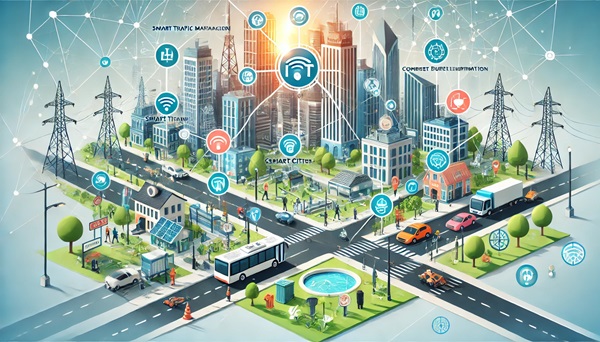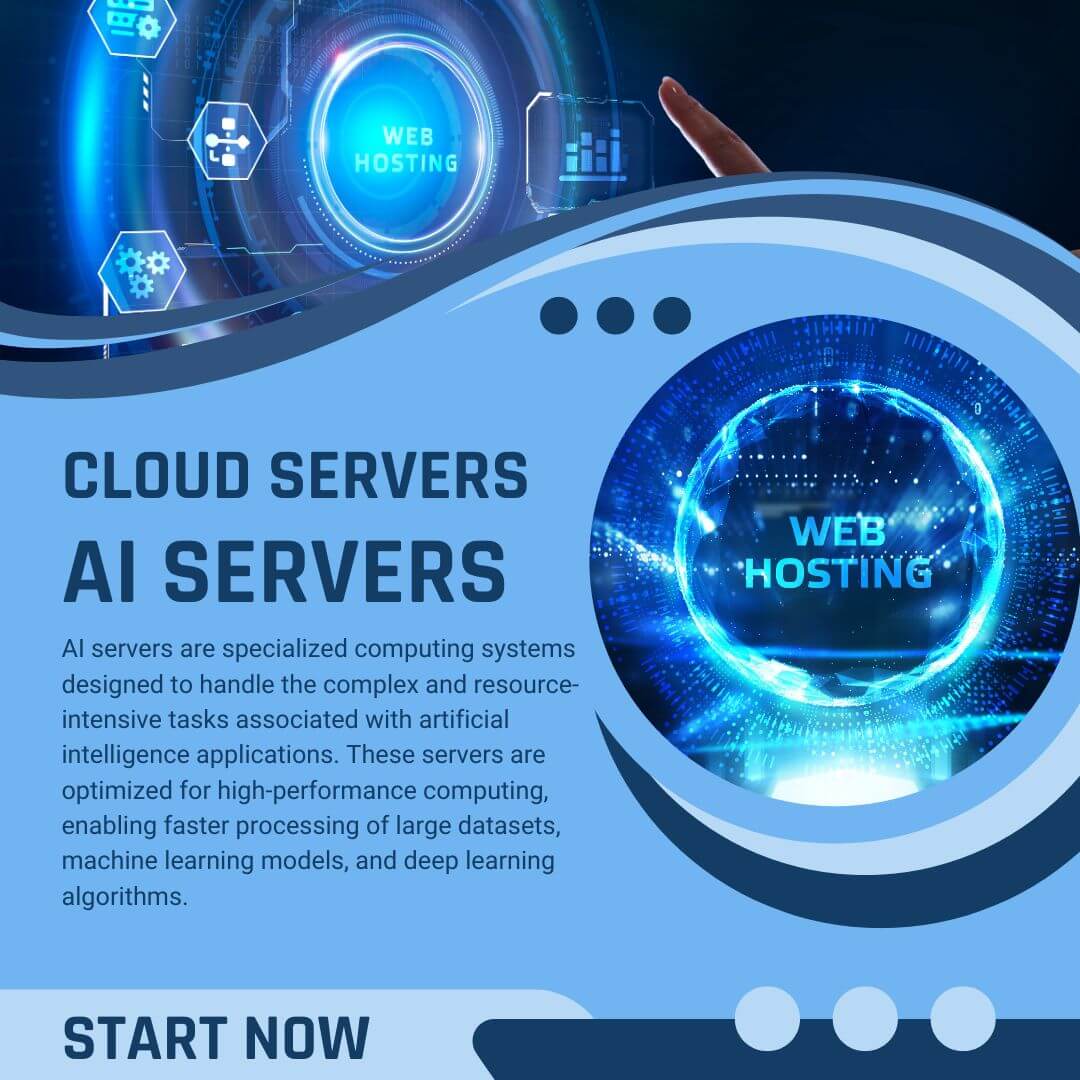In the age of rapid technological advancements, future cities increasingly rely on Internet of Things (IoT) technologies to enhance the quality of life for their residents and improve service efficiency. IoT refers to a network of interconnected devices that exchange data and communicate over the internet, enabling cities to achieve higher levels of intelligence in their management. This article explores the uses of IoT in smart cities and how it impacts various aspects of urban life.

Uses of Internet of Things in Smart Cities
Smart cities have become more prevalent thanks to advancements in IoT technologies, which contribute to the improvement of many urban aspects. This article focuses on the different applications of IoT technologies in smart cities and how these innovations can reshape urban living.
1. Enhancing Urban Infrastructure
IoT technologies play a vital role in enhancing urban infrastructure by providing real-time monitoring and management capabilities. Here's how IoT can improve infrastructure:
- Real-time Monitoring: Roads, bridges, and public buildings equipped with sensors collect data on their condition and usage. This information helps in scheduling maintenance and repairs in a timely manner, preventing costly damage and ensuring safety.
- Smart Traffic Management: IoT systems optimize traffic flow by analyzing data from traffic signals and cameras. This leads to reduced congestion and improved travel times.
- Public Facility Management: IoT enables better management of public amenities such as parks and libraries by providing data on usage patterns and needs.
2. Energy and Resource Management
Efficient management of energy and resources is a critical component of smart cities. IoT facilitates this by:
- Energy Consumption Monitoring: Smart meters and sensors track energy use in real time, allowing for data-driven decisions to improve energy efficiency and reduce waste.
- Water Resource Management: IoT systems monitor water usage and detect leaks or inefficiencies, leading to better water conservation practices.
- Waste Management: Sensors in waste bins provide data on fill levels, optimizing collection schedules and improving recycling processes.
3. Enhancing Safety and Security
IoT enhances safety and security in smart cities through:
- Smart Surveillance: Connected cameras and sensors monitor public spaces, detecting unusual activities and facilitating quick responses to emergencies.
- Early Incident Detection: Sensors detect potential risks such as fires or gas leaks, alerting authorities and residents to prevent incidents from escalating.
- Network Security: Advanced IoT systems protect data and communication networks from cyber threats, ensuring the integrity of smart city infrastructure.
4. Improving Citizen Experience
IoT enhances the quality of life for citizens by:
- Personalized Services: IoT applications provide tailored services based on individual needs, such as directing residents to the nearest electric vehicle charging stations.
- Smart Navigation: IoT-powered navigation systems guide users through optimal routes, avoiding congestion and reducing travel time.
- Interactive Public Services: Mobile apps and smart kiosks offer real-time information about public facilities, services, and events.
5. Promoting Sustainability and Environmental Health
IoT plays a key role in promoting sustainability by:
- Resource Efficiency: IoT systems analyze data to improve the efficiency of resource use, reducing environmental impact.
- Air Quality Monitoring: Sensors track pollution levels, helping to implement measures to improve air quality and reduce emissions.
- Renewable Energy Integration: IoT facilitates the management of renewable energy sources, such as solar panels, ensuring efficient use and storage of energy.
6. Facilitating Smart Communication
Effective communication between citizens and public facilities is enhanced through:
- Smart Transportation Systems: IoT improves communication about public transport schedules and delays, helping citizens plan their journeys better.
- Mobile Applications: Apps provide information about public services and facilities, making it easier for residents to access necessary resources.
- Social Interaction Platforms: Smart city technology enables platforms for residents to give feedback and engage with public services.
7. Data-Driven Decision Making
Data collected through IoT devices supports informed decision-making by:
- Trend Analysis: Analyzing data trends helps city planners make strategic decisions regarding urban development and resource allocation.
- Predictive Analytics: Predictive models based on IoT data forecast future needs and challenges, allowing for proactive management.
- Performance Evaluation: Continuous data monitoring helps evaluate the performance of city services and infrastructure, identifying areas for improvement.
8. Enhancing Emergency Response
IoT improves emergency response by:
- Real-Time Alerts: Connected sensors provide immediate alerts about disasters or emergencies, enabling quick intervention by authorities.
- Incident Location Tracking: IoT systems pinpoint the exact location of incidents, aiding emergency teams in responding effectively.
- Resource Coordination: IoT facilitates the coordination of resources and personnel during emergencies, ensuring efficient management of response efforts.
The Revolution of Smart City Technology with IoT
Smart city technology experiences a significant revolution through the application of IoT by integrating various devices and systems within the urban environment. This revolution relies on the capability to analyze vast amounts of data generated by connected objects and use this data to enhance services and improve the quality of life for residents.
By connecting sensor devices and smart appliances to the internet, cities can monitor various aspects of daily life, such as traffic flow, air quality, and energy consumption. For instance, IoT-enabled sensors can monitor air pollution levels, sending alerts to residents and suggesting alternative transportation options if pollution levels become hazardous.
Furthermore, IoT contributes to resource management by monitoring water and energy usage in real time. For example, sensors in public parks and government buildings can detect excessive water consumption, allowing for immediate identification and repair of leaks.
In summary, IoT brings about a revolution in smart city technology by enhancing public services, improving residents' quality of life, conserving resources, and promoting urban sustainability.
Essential Support for Improving Infrastructure in Smart Cities
IoT provides essential support for enhancing infrastructure in smart cities in several ways:
- Monitoring Vital Infrastructure: IoT systems monitor critical infrastructure like water, sewage, and electricity networks, providing accurate data on performance and identifying maintenance needs.
- Resource and Energy Efficiency: By tracking resource and energy usage with high precision, IoT enables authorities to make data-driven decisions to improve efficiency and reduce waste.
- Smart Maintenance and Repair: Analysis of sensor data identifies infrastructure components prone to issues, allowing for precise maintenance planning and avoiding unexpected breakdowns.
- Public Transportation and Mobility: IoT enhances public transportation systems by optimizing schedules and traffic flow, reducing congestion, and improving commuting experiences.
- Tailored Public Services: IoT helps provide tailored public services based on data, improving efficiency and better meeting community needs.
The Perfect Partnership for Enhancing Energy Management
The perfect partnership to improve energy management in smart cities relies on IoT technology and encompasses several aspects:
- Smart Grid and Control Systems: Smart grids and control systems use sensors and automation to monitor and manage energy consumption efficiently, identifying efficiency gaps and implementing adjustments to reduce waste.
- Data Analysis for Decision-Making: Data analysis helps identify trends in energy consumption, uncover opportunities for efficiency improvements, and save energy.
- User Engagement: IoT encourages continuous interaction with users by providing transparent energy consumption data, enabling residents to adopt sustainable habits.
- Control of Smart Devices: Connected smart devices allow for precise control of energy consumption, such as optimizing lighting and heating based on usage patterns.
- Encouraging Innovation: Focusing on IoT encourages innovation and development in energy management, supporting research and startups for new solutions.
How IoT Enhances Security in Smart Cities
IoT plays a crucial role in enhancing security in smart cities in various ways:
- Smart Monitoring and Surveillance: IoT enables the deployment of connected cameras and sensors to monitor public areas, detect unusual activities, and facilitate quick responses.
- Advanced Threat Detection: IoT systems detect potential threats such as cyber-attacks, enabling timely interventions and minimizing potential damage.
- Emergency Response Coordination: Integrated IoT systems provide real-time data to emergency response teams, improving coordination and effectiveness during crises.
- Data Security Measures: Ensuring data security in IoT networks is essential to protect sensitive information and maintain trust in smart city systems.
- Enhancing Public Safety: IoT enhances public safety through real-time alerts about emergencies and potential risks, enabling faster response and prevention measures.
Conclusion
IoT is revolutionizing the way cities operate, offering solutions that improve infrastructure, enhance energy management, increase security, and elevate the quality of life for residents. As technology continues to advance, smart cities will increasingly rely on IoT to address urban challenges, promote sustainability, and create more efficient, connected, and responsive environments.
By integrating IoT into urban planning and management, cities can unlock new levels of efficiency, safety, and livability, setting the stage for a brighter future in urban development.








